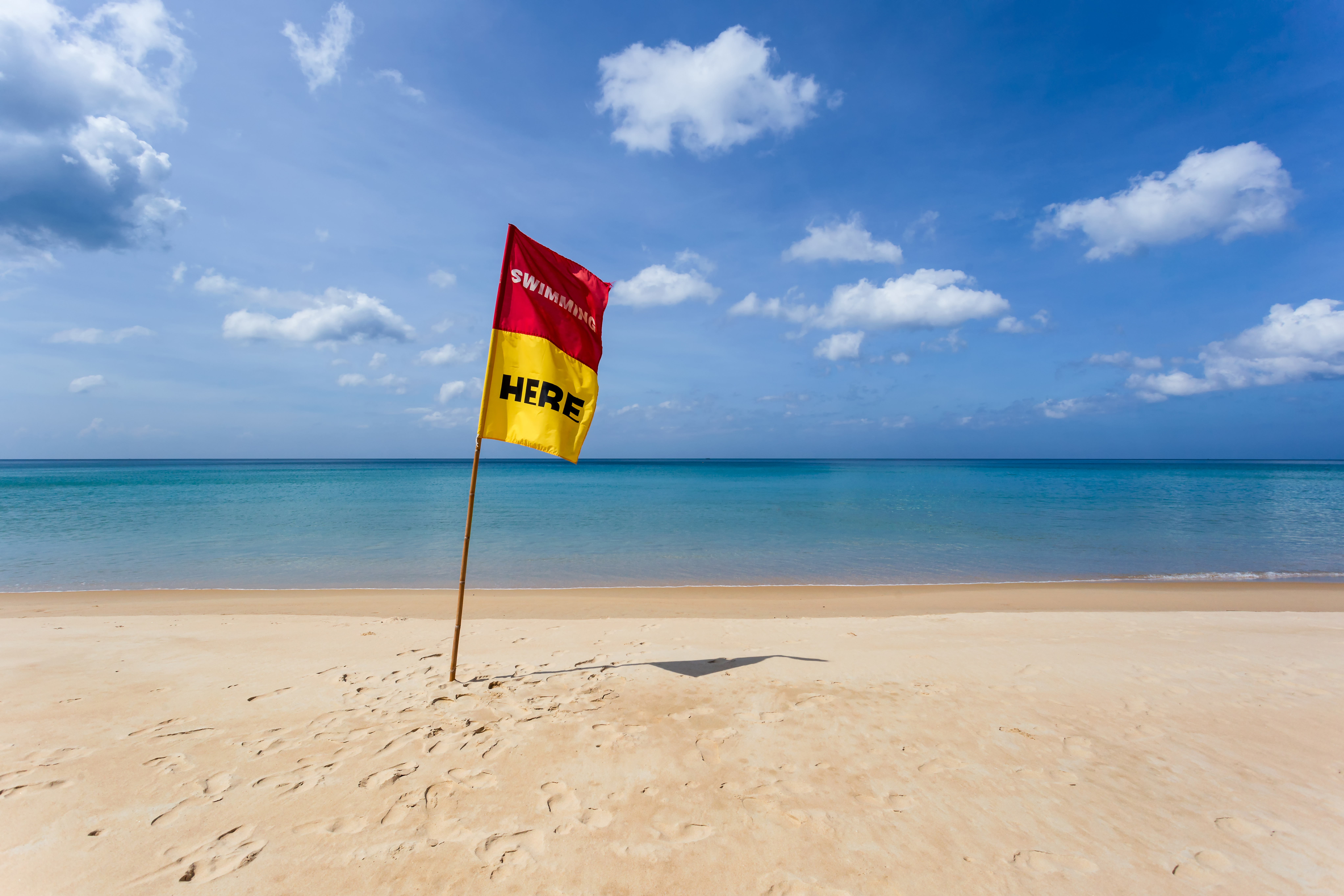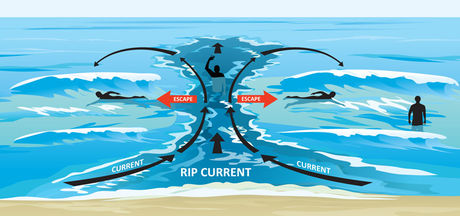Many people believe that the main danger in the ocean is the big waves. However, the real risk lies in rip currents. Below, we will share how to recognize danger, what to do if caught in a current, and how to swim safely.

What is a Rip Current?
When large waves break against the shore, they create foam that pushes the swimmer back to land. Conversely, a rip current is a narrow but powerful stream that carries you out to the ocean. It's hard to recognize and nearly impossible to swim against, even on a surfboard.
The danger here: often, there are no waves in such spots - the water seems calm. A person swims, gets caught in the current, and finds themselves far from shore. In panic, they try to swim back, but the current is stronger. With energy running out and fear increasing, they begin to drown.

How to Get Out of a Rip Current?
1. Stay Calm. This is the most important and at the same time, the hardest thing to do. In panic, a person loses control of their breathing, wastes energy, and can't assess the situation clearly. Remember: rip currents don't drag you under, they just carry you away. Staying calm and confident helps save energy and make the right decision.
2. Assess Your Surroundings. Look around: which direction is it taking you? How strong are the waves? Are there any surfers or people on the shore who can help? Evaluating the situation helps avoid unnecessary movements and choose the safest path to safety.
3. Swim Along the Shore. Try to get out of the current’s zone by moving parallel to the shoreline. Don't fight the current directly — it's pointless and will only exhaust you. Move towards calmer water, breathe steadily, and if waves hit, dive under them to maintain your rhythm.
4. Check If You're Out of the Current. If you chose one side (for example, right) and still feel it's carrying you - change direction. Swim the other way along the shore. Rip currents have a limited width, and it's important to find a way out of them.
5. When Released from the Current, Swim to Shore Using the Waves. Now that you're out of the rip current zone, head towards the shore. Try to use the waves to your advantage — let them help you move forward. Don't rush, swim steadily, and don't waste energy on bursts.
6. Call for Help. If you see surfers or people on the shore - wave your arms, signal them. A loud shout might not help due to the sound of the waves, but active gestures are more noticeable. Don't hesitate to ask for help: time is critical, and the sooner you are noticed, the better your chances for a safe outcome.

Main Rules for Safe Ocean Swimming
1. Assess Your Abilities and Experience.
Before entering the ocean, consider how confident you are in the water. If you're not a professional swimmer or lack experience with waves and currents, never risk going to wild and isolated beaches. Even experienced swimmers can overestimate themselves — overconfidence is often the cause of tragedies. It's much safer to choose beaches with lifeguards and clearly marked swimming areas. Avoid swimming alone, especially at night or after drinking alcohol. And if you're an elderly person, it's best to enjoy relaxing by the hotel pool without risking your life in unfamiliar waters.
2. Assess the Beach Before Swimming.
Before entering the water, stop and take a careful look around: are there strong waves today, are the lifeguards on duty, are there flags indicating danger? Pay attention to other vacationers and surfers, but don't swim too close to them — in the heat of a wave, they might accidentally hit you. Remember: the safe swimming zone is always marked by yellow-red flags, swim between them. A red flag means no swimming — don't ignore this signal. If you're unsure whether it's safe to enter the water, don't hesitate to ask a lifeguard — it's the best way to avoid trouble.
3. Monitor Conditions in the Water.
When you are in the water, stay oriented. Frequently check if you are being carried sideways — this could be the first sign of a rip current. Always keep track of how far you've drifted from the shore, and try to always swim along it, not back and forth into the ocean. This swimming style reduces the risk of encountering a rip current. Don’t get distracted by conversations, gadgets, or attempts to take the perfect photo — your attention should be focused on your safety. The ocean is treacherous, and even in seemingly calm water, hidden dangers may lurk.
.

We hope this guide helps you enjoy a safe and fun vacation! The ocean is beautiful but demands respect and a sensible approach.
You can always join an organized safe tour and enjoy the ocean with excursions from MyBaliTrips.
⚡Our managers are ready to assist you in messengers👇🏼
On Telegram @mybalitrips or WhatsApp
You can add one right now!